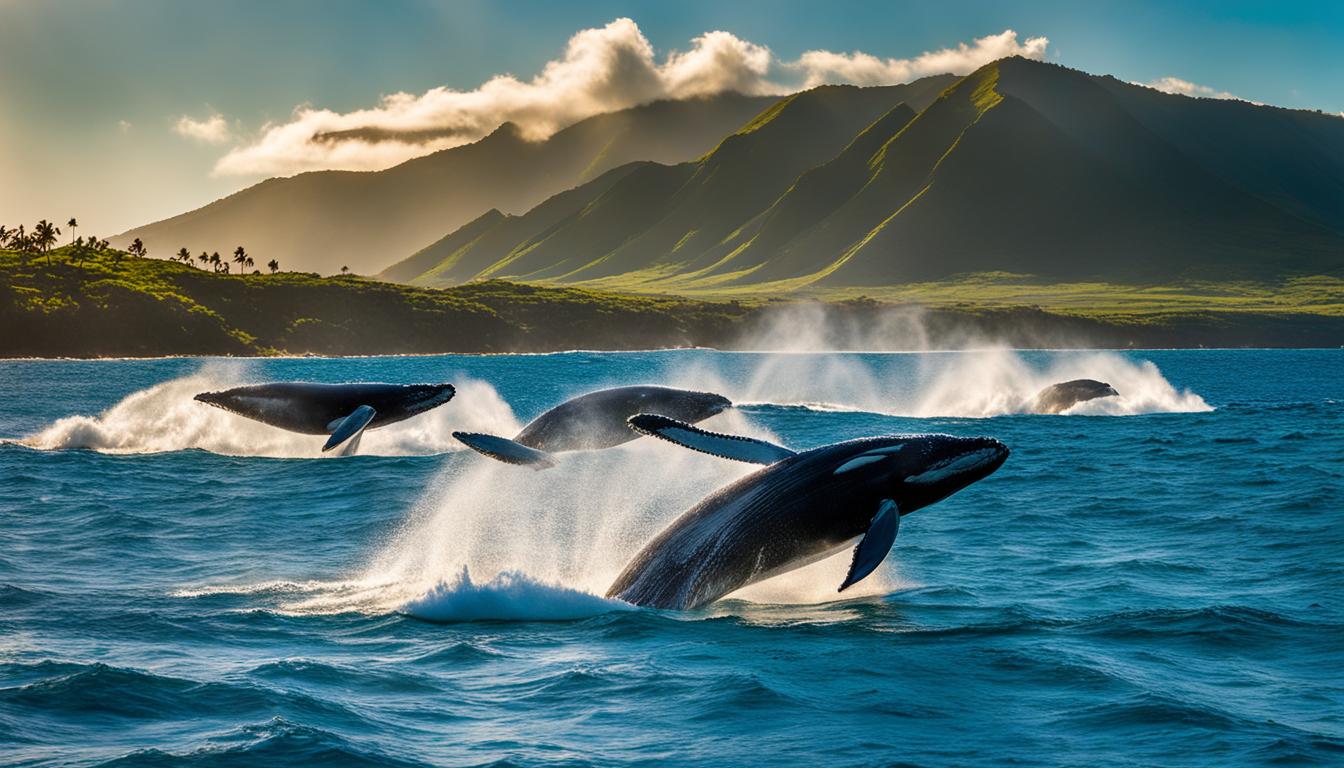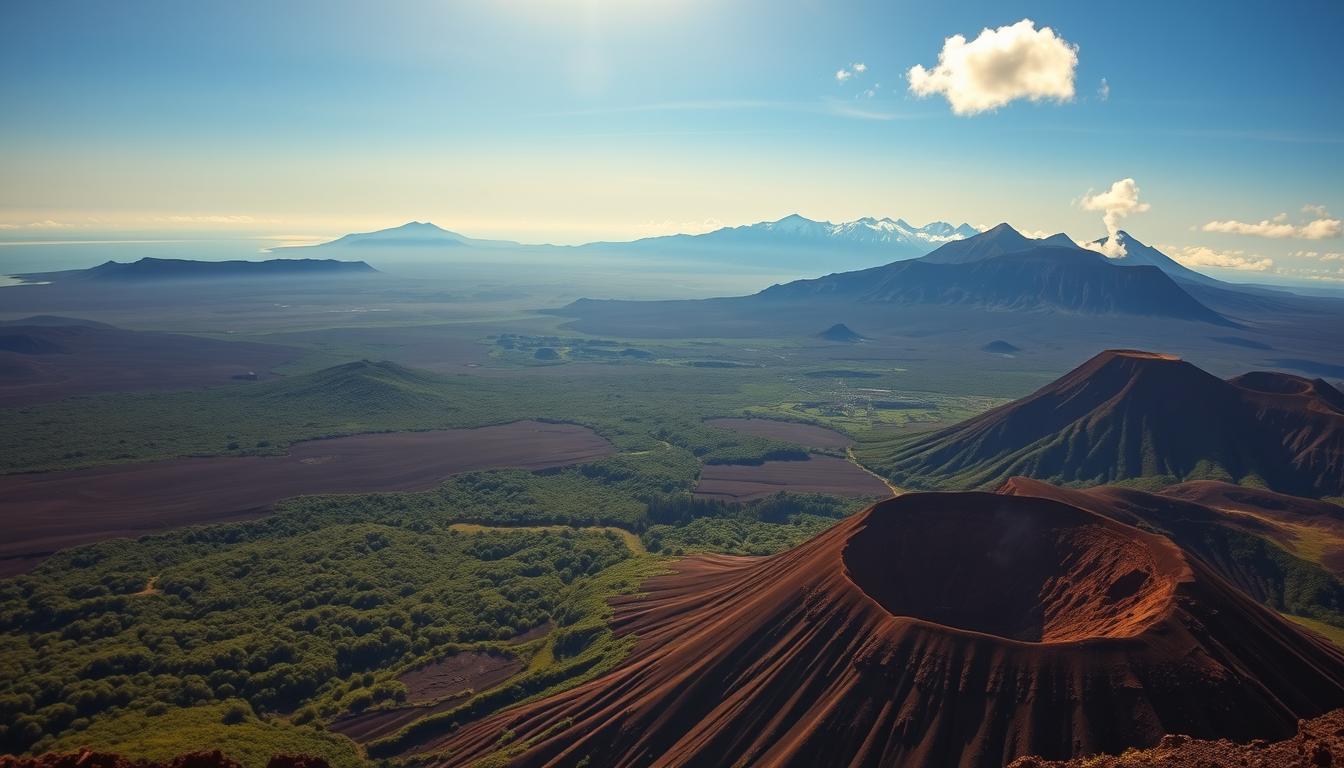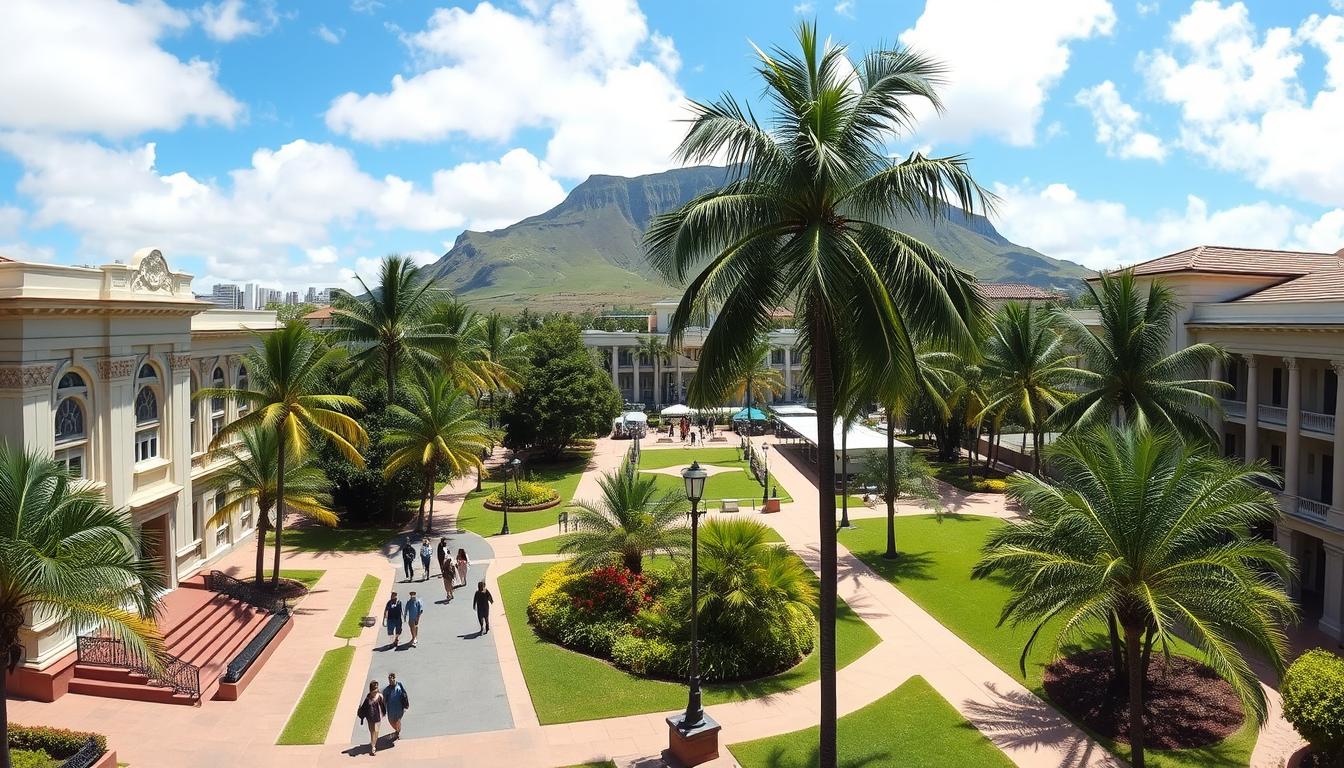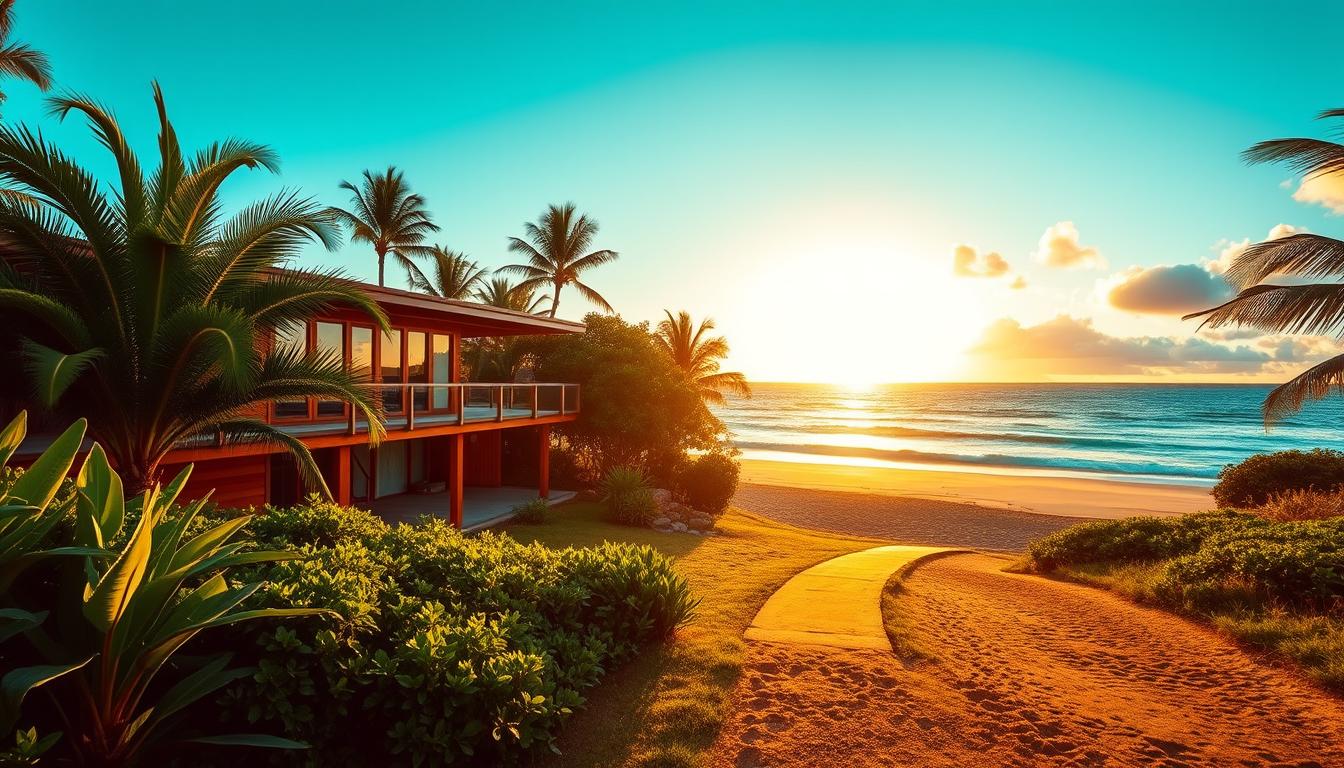Are you planning a trip to Hawaii in 2024 and want to experience the thrill of whale watching? Look no further! Hawaii is a hotspot for whale watching, especially for the magnificent humpback whales. From November to April, you can witness these majestic creatures in their natural habitat, with the peak months being January and February. Whether you’re on the Big Island or exploring the other islands, there are plenty of opportunities to catch a glimpse of these incredible creatures. Join a boat tour or explore the prime DIY viewing locations for an unforgettable whale watching adventure in Hawaii.
Key Takeaways:
- Plan your trip between November and April for the best chance to see humpback whales in Hawaii.
- The Big Island and Maui are among the top spots for whale watching, with the latter offering calm and shallow waters preferred by whales.
- Consider taking a boat tour or joining a guided excursion to maximize your chances of spotting whales up close.
- There are various whale watching tour companies in Hawaii, offering a range of options from large boats to smaller Zodiac-style boats.
- If you prefer watching whales from the shore, there are prime locations on the Big Island, Maui, Oʻahu, and Kauaʻi where you can enjoy DIY whale watching.
Best Time for Whale Watching in Hawaii
The best time for whale watching in Hawaii is during the months of January and February. This is when the humpback whales are most abundant in Hawaiian waters. The whales start arriving in late November and continue to arrive throughout the season, with their numbers peaking in January and February. By April, the whales begin to depart from Hawaii. It is important to note that while whale sightings are possible throughout the season, the highest chances of seeing whales are during the peak months of January and February.
Peak Months for Whale Watching
- Season: November to April
- Peak Months: January and February
- Arrival: Late November
- Departure: April
During the peak months, the humpback whales engage in various behaviors such as breaching, tail slapping, and singing. These majestic displays make it an ideal time to witness the incredible acrobatics and communication of these magnificent creatures. Whether you choose to take a boat tour or watch from the shore, January and February offer the best opportunities to experience the magic of whale watching in Hawaii.
Weather and Ocean Conditions
Aside from the increased whale activity, January and February also offer favorable weather and ocean conditions for whale watching in Hawaii. The ocean is typically calm during these months, providing a smoother and more enjoyable experience for both boating tours and shore-based observation. The weather is generally mild, with temperatures ranging from the mid-70s to low 80s Fahrenheit (mid-20s to high 20s Celsius), making it comfortable for outdoor activities.
| Month | Average Water Temperature (°F) | Average Air Temperature (°F) |
|---|---|---|
| January | 75-76 | 75-80 |
| February | 75-76 | 75-80 |
Overall, if you’re planning a trip to Hawaii for whale watching, be sure to schedule your visit during the peak months of January and February. These months offer the highest chance of seeing humpback whales in Hawaiian waters, along with favorable weather and ocean conditions. Whether you choose to embark on a boat tour or enjoy shore-based observation, witnessing the majestic humpback whales in their natural habitat is a truly unforgettable experience.
Best Islands for Whale Watching in Hawaii
While the Big Island is known for its excellent whale watching opportunities, other islands in Hawaii also offer great experiences. Maui, with its shallow and calmer waters in the ʻAuʻau channel, is considered one of the best islands for whale watching tours. Oʻahu and Kauaʻi are also popular destinations for whale watching, with many tour operators offering boat tours and cruises from different harbors. Each island has its own unique viewing spots and characteristics for whale watching, so it is worth exploring all the options.
Maui
Maui, also known as the “Valley Isle,” is a top choice for whale watching in Hawaii. The ʻAuʻau channel, located between Maui, Molokai, and Lanai, is a preferred breeding and calving area for humpback whales. The sheltered and shallow waters provide a peaceful environment for these majestic creatures. Many tour companies in Maui offer whale watching excursions, allowing visitors to witness the awe-inspiring displays of the humpback whales.
Oʻahu
Oʻahu, the most populous island in Hawaii, is not only known for its vibrant city life but also for its incredible whale watching opportunities. The eastern, northern, and western shores of Oʻahu are popular spots for whale sightings. Joining a whale watching tour from one of the harbors on the island is a great way to observe these magnificent creatures in their natural habitat. The tours often provide expert guides who share fascinating information about the humpback whales.
Kauaʻi
Kauaʻi, also known as the “Garden Isle,” offers stunning landscapes and diverse marine life, including humpback whales. The Napali Coast, with its towering cliffs and crystal-clear waters, is a prime location for whale watching. Many sailing and snorkeling cruises along the Napali Coast include whale watching as part of their itinerary. Witnessing the playful nature of these gentle giants against the backdrop of Kauaʻi’s dramatic coastline is an unforgettable experience.
When planning your whale watching adventure in Hawaii, consider visiting Maui, Oʻahu, and Kauaʻi to explore the unique whale watching experiences each island has to offer. Whether you choose to go on a boat tour or watch from the shore, you’re sure to be captivated by the incredible beauty and behavior of the humpback whales in Hawaii’s waters.
| Island | Special Features |
|---|---|
| Maui | – Shallow and calmer waters in the ʻAuʻau channel – Preferred breeding and calving area for humpback whales |
| Oʻahu | – Eastern, northern, and western shores are popular for whale sightings – Vibrant city life combined with whale watching opportunities |
| Kauaʻi | – Napali Coast offers stunning landscapes and diverse marine life – Sailing and snorkeling cruises provide whale watching experiences |
Best Whale Watching Tours in Hawaii
When it comes to experiencing the wonders of whale watching in Hawaii, taking a guided excursion or tour can offer an unforgettable adventure. There are several reputable whale watching companies in Hawaii that provide expert guides and naturalists who can enhance your understanding of the humpback whales’ behavior and habitat.
Two highly recommended whale watching tour companies in Hawaii are the Pacific Whale Foundation and Body Glove. These companies operate in various islands across Hawaii and offer a range of tour options to suit different preferences.
The Pacific Whale Foundation is known for its commitment to marine conservation and sustainable tourism practices. Their tours provide educational and interactive experiences, with knowledgeable guides who share insights into the humpback whale’s biology and conservation efforts. Whether you choose a catamaran tour or a smaller boat excursion, the Pacific Whale Foundation offers an unforgettable whale watching experience.
Body Glove is another renowned whale watching company in Hawaii, offering tours that cater to different interests and group sizes. Their larger catamaran boats provide a comfortable and spacious setting for whale watching, while their smaller zodiac-style boats offer a more intimate and up-close encounter with the whales.
Both the Pacific Whale Foundation and Body Glove prioritize the well-being of the whales and operate with a deep respect for these majestic creatures. By choosing one of these reputable companies, you can rest assured that your whale watching experience in Hawaii will be both enjoyable and responsible.
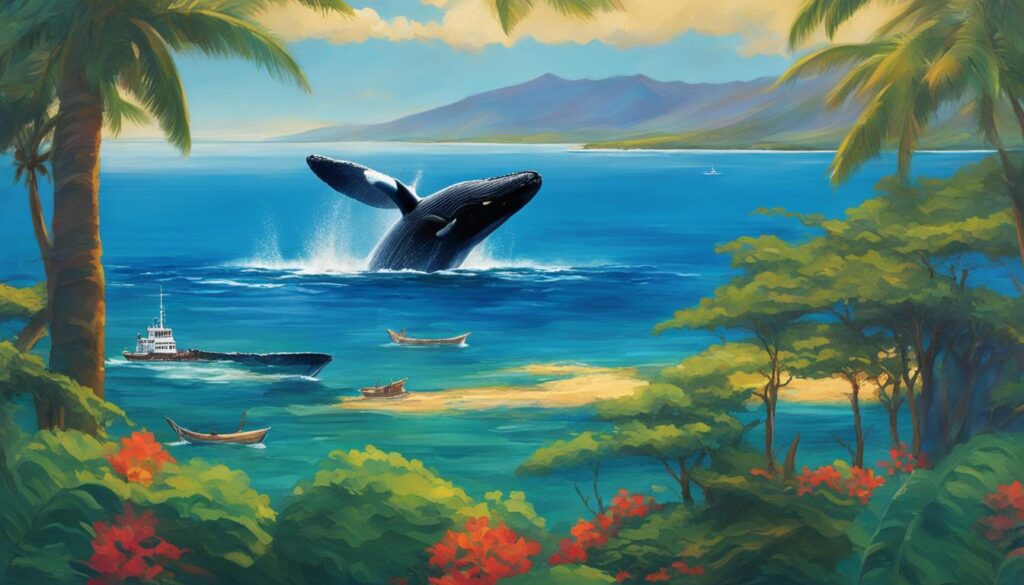
Table: Comparison of Whale Watching Tours in Hawaii
| Tour Company | Tour Options | Boat Type | Price Range | Highlights |
|---|---|---|---|---|
| Pacific Whale Foundation | Various catamaran and smaller boat tours | Catamarans and zodiac-style boats | $50 – $150 per person | Educational experiences, expert guides, sustainable practices |
| Body Glove | Catamaran and zodiac-style boat tours | Catamarans and zodiac-style boats | $70 – $130 per person | Comfortable boats, up-close encounters, knowledgeable guides |
Diy Whale Watching from the Shore
If you prefer to watch whales from the shore, there are several prime locations in Hawaii for DIY whale watching. On the Big Island, recommended spots include Puukohola Heiau National Historic Site, Lapakahi State Historical Park, and Kapaʻa Beach Park. These locations offer elevated views and are known for frequent whale sightings. On Maui, the Makapuʻu Lighthouse hike and various beaches along the eastern point of the island are great for shore-based whale watching. Oʻahu also has great spots along its eastern, northern, and western shores, including Makapuʻu Point and Kīlauea Lighthouse. Kauaʻi offers excellent whale watching opportunities along the Napali Coast, and Poʻipū Beach is a popular spot for sightings.
Best Shore-Based Whale Watching Spots in Hawaii:
| Island | Location |
|---|---|
| Big Island | Puukohola Heiau National Historic Site |
| Lapakahi State Historical Park | |
| Kapaʻa Beach Park | |
| Maui | Makapuʻu Lighthouse Hike |
| Eastern Beaches | |
| Oʻahu | Makapuʻu Point |
| Kīlauea Lighthouse | |
| Kauaʻi | Napali Coast |
| Poʻipū Beach |
These locations offer a combination of stunning views, elevated platforms, and coastal landscapes, making them ideal for observing whales from a distance. Remember to bring binoculars for a closer look, and always follow guidelines to maintain a safe and respectful distance from the whales.
Image source: Diy Whale Watching
Whale Watching FAQ
Here are some frequently asked questions about whale watching in Hawaii:
What are the best places to go whale watching on the Big Island?
Recommended viewing locations include the northwestern coast, with specific spots such as Puukohola Heiau National Historic Site, Lapakahi State Historical Park, and Kapaʻa Beach Park. These areas offer elevated views and are known for frequent whale sightings.
What is the best whale watching tour in Kona?
When considering whale watching tours in Kona, the size of the vessel is an important consideration. Larger vessels, like those offered by Body Glove, tend to provide more amenities and better equipment for a comfortable and enjoyable experience.
What are the best months to go whale watching in Hawaii?
The peak months for whale watching are January and February when the humpback whale population in Hawaiian waters reaches its highest numbers. The first whales start arriving in late November, and more whales continue to arrive as the season progresses. The whales depart from Hawaii again in late April/early May.
What is the best time of day to go whale watching?
While whales can be active throughout the day, it is recommended to go on tours that take place in the early morning when the ocean is most calm. This provides better visibility and increases the chances of spotting whales in their natural habitat.
| FAQ | Answer |
|---|---|
| Best places for whale watching on the Big Island | Puukohola Heiau National Historic Site, Lapakahi State Historical Park, and Kapaʻa Beach Park |
| Best whale watching tour in Kona | Larger vessels, such as those offered by Body Glove |
| Best months for whale watching in Hawaii | January and February |
| Best time of day for whale watching | Early morning |
About Humpback Whales
Humpback whales are incredible creatures that can be observed during the whale watching season in Hawaii. These majestic whales undertake an extraordinary migration from their feeding grounds in Alaska to the warm waters of Hawaii. They typically arrive in Hawaiian waters between November and April, making this destination a crucial breeding and calving ground for humpback whales.
Humpback whales are known for their impressive acrobatic displays, including breaching and tail slapping. Breaching is when a whale propels itself out of the water, while tail slapping involves the whale slapping its tail on the surface. These behaviors are believed to serve various purposes, such as communication, mating displays, or simply playing.
During their time in Hawaii, humpback whales can often be spotted swimming, diving, and even nursing their young calves. Understanding the behavior and habitat of these magnificent creatures is essential for their conservation, as well as for providing an unforgettable whale watching experience for visitors to Hawaii.
Humpback Whale Migration to Hawaii
Humpback whales undertake one of the longest migrations in the animal kingdom. Every year, they travel approximately 3,000 miles from Alaska to the warm waters of Hawaii. This migration is driven by the need to find suitable breeding and calving grounds.
The humpback whales’ journey to Hawaii begins in late fall, with the first whales arriving around November. As the season progresses, more and more whales join them, peaking in January and February. By April, the whales start their return journey to Alaska’s feeding grounds, where they spend the summer months.
It is still not fully understood why humpback whales migrate such long distances. However, theories suggest that they might travel to Hawaii to escape the colder Alaskan waters and to give birth to their calves in warmer, safer environments. Hawaii’s shallow and calm waters provide ideal conditions for both nursing and mating activities.
| Key Information about Humpback Whales |
|---|
| Scientific Name: Megaptera novaeangliae |
| Size: Adult humpback whales can reach lengths of 40-50 feet and weigh up to 45 tons. |
| Lifespan: Humpback whales have an average lifespan of 45-50 years. |
| Population: The global population of humpback whales is estimated to be around 80,000 individuals. |
| Conservation Status: Humpback whales are currently listed as “Least Concern” by the International Union for Conservation of Nature (IUCN). |
Fun Facts about Humpback Whales
- Humpback whales are known for their complex songs, which can last up to 20 minutes and can be heard from miles away.
- Male humpback whales are known for their acrobatic displays and are often seen breaching and slapping their tails on the water’s surface.
- Female humpback whales are slightly larger than males.
- Calves stay with their mothers for approximately one year, during which they learn essential survival skills.
- Humpback whales are filter feeders, consuming vast amounts of krill and small fish by gulping large volumes of water and then filtering out their prey through baleen plates.
Whale Watching Season 2024
The highly anticipated whale watching season in Hawaii for the year 2024 is just around the corner. As the first humpback whales are expected to arrive in Hawaiian waters in October, mid-October is when the official whale sightings are most likely to be reported. The peak of the season is projected to be in January and February, providing the highest number of whale sightings for visitors to witness.
To fully experience the wonder of these majestic creatures, whale watching tours and excursions are expected to start in mid-December as the season reaches its full swing. By joining a guided tour, visitors can maximize their chances of spotting whales and learn from expert guides who can provide insights into the behavior and habitat of humpback whales.
Stay informed about the latest reports and sightings to plan your whale watching adventure in Hawaii in 2024. Whether it’s your first time or a return visit, the unique and awe-inspiring experience of witnessing humpback whales in their natural habitat is one that should not be missed.
| Month | Activity |
|---|---|
| October | First humpback whales arrive in Hawaiian waters |
| Mid-October | Official whale sightings reported |
| January – February | Peak of whale watching season with highest number of whale sightings |
| Mid-December | Whale watching tours and excursions start |
Whale Watching Tours from Other Islands in Hawaii
In addition to the Big Island, there are fantastic whale watching tours available on other islands in Hawaii. Whether you’re in Maui, Oahu, or Kauaʻi, you can embark on an unforgettable adventure to witness these magnificent creatures up close.
Maui
If you’re on Maui, Lahaina Harbor is the place to be for whale watching tours. This historic town serves as a popular departure point, offering a variety of tours that will take you to the prime whale watching spots. One of the favored locations is the ʻAuʻau channel, known for its shallow waters where humpback whales enjoy calving and breeding. With experienced captains and knowledgeable guides, these tours provide an immersive and educational experience.
Oahu
Oahu, the gathering place of Hawaii, also offers exciting whale watching tours. With operators along the eastern, northern, and western shores, you’ll have plenty of options to choose from. Whether you prefer a large boat tour or a more intimate cruise, you can expect to witness the awe-inspiring sight of humpback whales in their natural habitat. Don’t forget to keep your camera ready, as you may capture stunning breachings and tail flukes.
Kauaʻi
Known as the Garden Isle, Kauaʻi is another incredible destination for whale watching tours. The Napali Coast, with its dramatic cliffs and pristine waters, provides an idyllic setting for observing these gentle giants. Many sailing and snorkeling cruises offer specialized whale watching experiences during the season, allowing you to marvel at the grandeur of humpback whales while enjoying the beauty of Kauaʻi’s coastline.
Each island in Hawaii offers its own unique whale watching experiences, so be sure to explore the options available on the island you’re visiting. Whether you choose to embark on a guided boat tour or prefer to watch from the shore, witnessing the majestic humpback whales in their natural habitat is an unforgettable experience that will leave you in awe.
Tips for Whale Watching in Hawaii
Whale watching in Hawaii can be an incredible experience, allowing you to witness the majestic humpback whales in their natural habitat. To make the most of your whale watching adventure, here are some helpful tips:
1. Come prepared:
Dress in layers to adapt to changing weather conditions and wear comfortable shoes with good traction, as decks can be slippery. Don’t forget to bring binoculars and a camera with a zoom lens to capture the awe-inspiring moments.
2. Protect yourself from the sun:
Apply sunscreen before boarding and bring a hat to shield yourself from the sun’s rays during the tour. It’s important to take care of your skin and stay comfortable throughout the experience.
3. Respect the guidelines:
Listen carefully to the instructions provided by the tour guides and follow their guidelines. This ensures a safe and respectful whale watching experience for everyone. Be mindful of the 100-yard distance rule and let the whales dictate the interaction.
4. Embrace the marine wildlife:
While on the lookout for whales, keep an eye out for other marine creatures that may appear, such as dolphins and sea turtles. These delightful encounters enhance the overall experience and provide unforgettable memories.
By following these tips, you can maximize your enjoyment of whale watching in Hawaii. Remember to book your tour in advance, respect the whales and their environment, and savor every moment of this incredible natural spectacle.
FAQ
What are the best places to go whale watching on the Big Island?
Recommended viewing locations include the northwestern coast, with specific spots such as Puukohola Heiau National Historic Site, Lapakahi State Historical Park, and Kapaʻa Beach Park. For whale watching tours, those departing from Kona are preferable.
What is the best whale watching tour in Kona?
The size of the vessel is an important consideration, with larger vessels like Body Glove’s tours offering more amenities and better equipment.
What are the best months to go whale watching in Hawaii?
The peak months for whale watching are January and February, when the humpback whale population in Hawaiian waters reaches its highest numbers. The first whales start arriving in late November, and more arrive as the season progresses. The whales depart from Hawaii again in late April/early May.
What is the best time of day to go whale watching?
While whales are active throughout the day, it is recommended to go on tours that take place in the early morning when the ocean is most calm.
What is the best island to go whale watching?
While the Big Island is a popular choice, Maui is often considered the best island for whale watching tours due to its shallow and calm waters in the ʻAuʻau channel.

Scott Sweeney is the creator of Virtual Hawaii 360. Scott is a professional marketer and a lifelong Hawaii enthusiast. Scott splits time between Oahu and Dayton, Ohio. In addition to his marketing endevours, he is also a published Ukulele musician.

